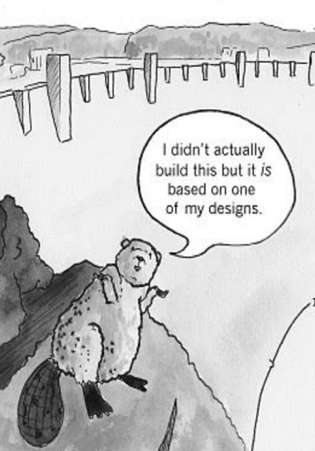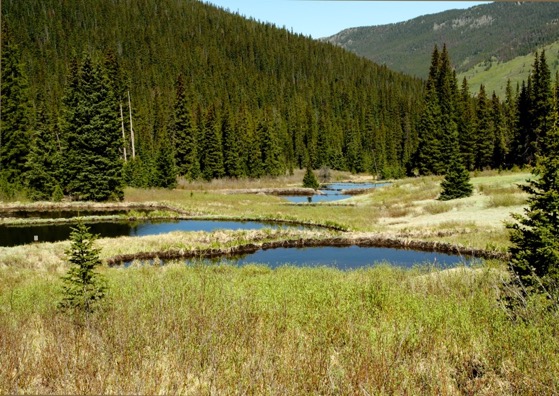On Biolinks and Keystone Beavers
The great biolink work being done by the MPLN is leaping ahead this autumn. Exotic weeds and pests are under sustained attack. Fifteen thousand tubes of mesh and plastic are popping up all over along Splitter’s Creek, each with its precious seedling.
This ability to both destroy and create ecosystems makes humans one of the planet’s keystone species, in that many other species depend on our actions.

The biolink changes have required tremendous efforts by a band of volunteers combined with government and private support and the willingness of local landowners to participate. Working recently on the biolink planting with aching back, I found myself wondering if it really is worth all that effort. But then I recalled a trip to Yellowstone National Park a few years ago, where I saw the massive changes that can result from even relatively small initiatives by a keystone species.
American beavers (Castor sp) depend on willows for food. They build dams and wetlands that enable them to store food and to build lodges to provide shelter through the harsh winters. The result is a string of still ponds, each carefully regulated. As time goes by, the older ponds silt up and fertile flats develop in the beaver valleys. Plants, bugs, birds, animals and fishes move in and interact in a complex and beautiful ecosystem. Even the beaver gains from the profusion of willows that its self-generated ecosystem supports.
Like us, these ‘ecosystem engineer’ beavers are a keystone species.
Decades ago, wolves were hunted into extinction in the park. Elk proliferated. They have a liking for willows and without the hassling by wolves substantially reduced the beaver’s food sources. The beavers became extinct in all but one location, their wetlands became degraded, fish became rare, animals and birds moved away, and dryland plants started moving in.

The simple act of reintroducing a pack of wolves changed all that. Harassment of the elk restricted their breeding. Willow groves began to redevelop. The beavers are bouncing back and the entire park has started down the long path of ecological regeneration.
As I go back to planting, I am left musing on where our current efforts will lead. Wherever that is, it sure will be fun to watch it happen.
- Article and image by Greg Holland, cartoon from here.